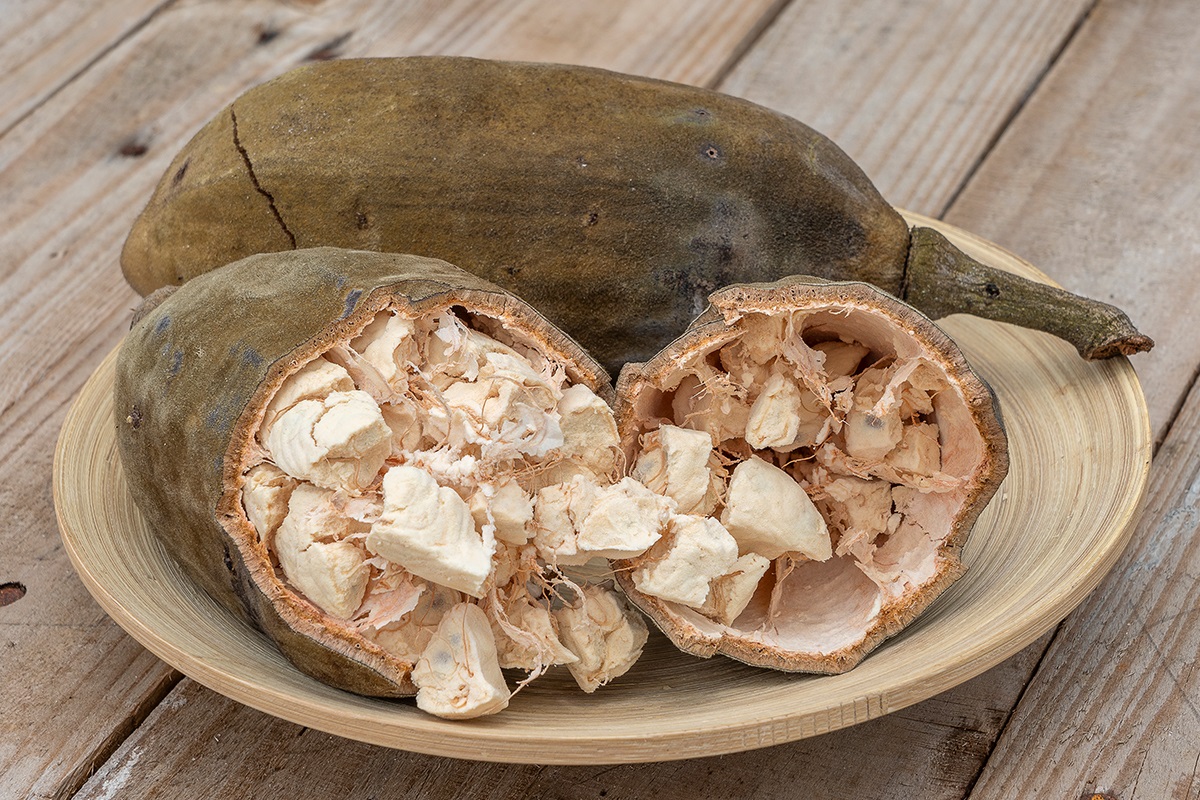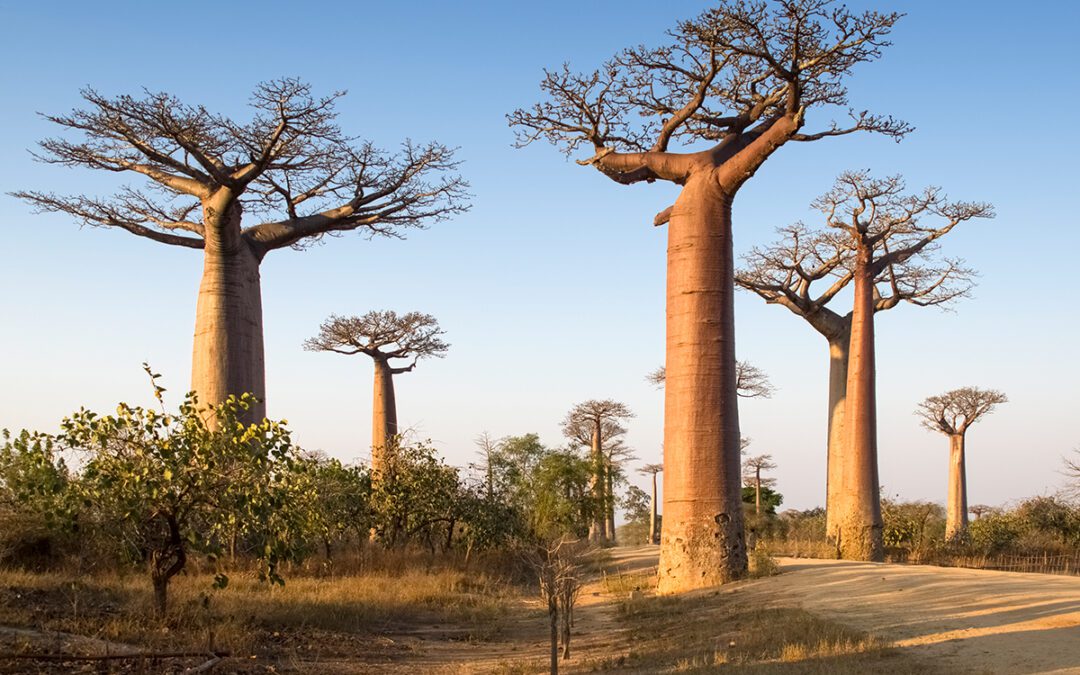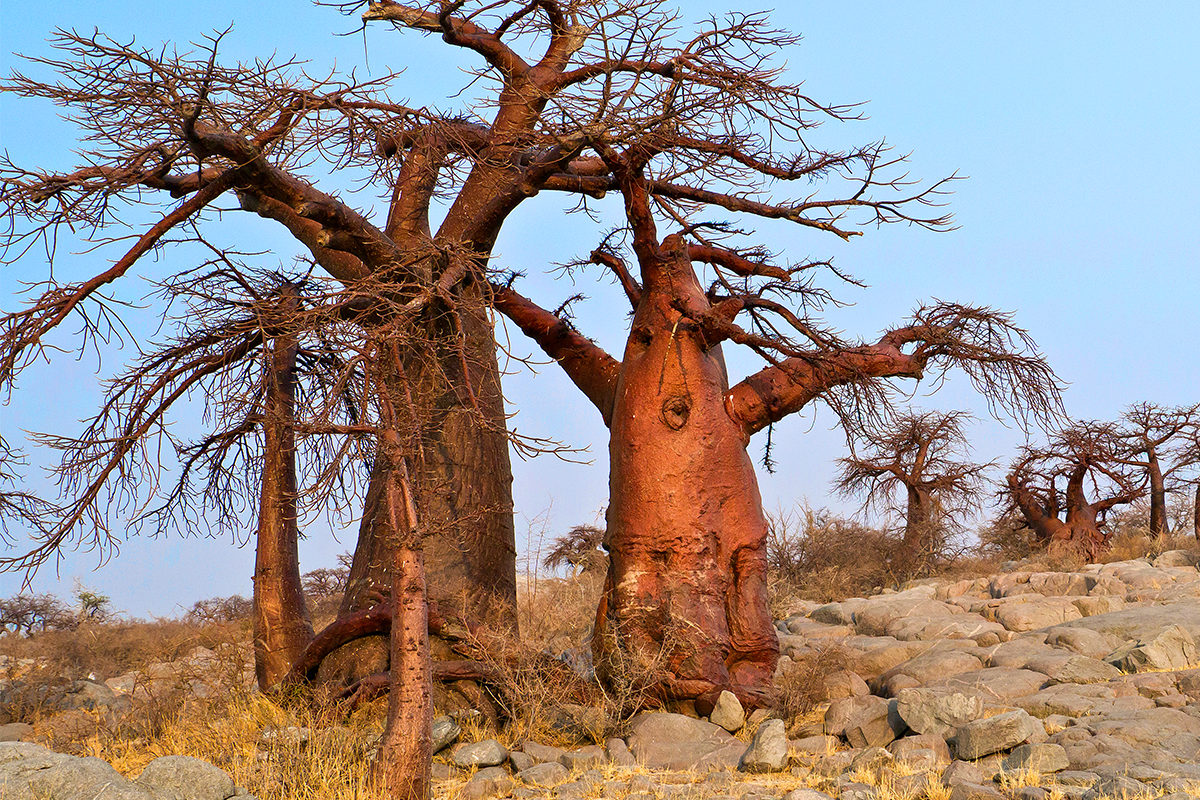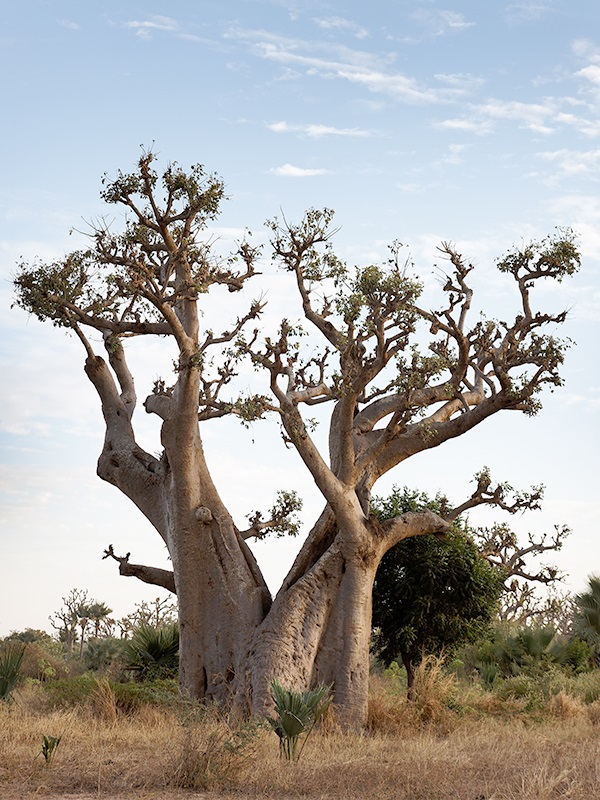Compared to other tree species, the baobab tree (Adansonia digitata L.) has a distinctive morpho-structure that makes identification easier. It is unexplored domestically and is also referred to locally as the “African baobab,” “Dead rat tree,” or “Monkey bread tree.” Malvaceae family member Adansonia digitata L. is indigenous to African savannas as well as parts of various islands in the Atlantic and Indian Oceans. Additionally, it has reached some regions of Asia and Australia. The baobab tree, locally dilated as the Rukhdo or Gheluvruksh in Gujarati is located in Vadodara, India, where it is protected by the government.

What are the Uses for Baobab fruits?
Fruit with a powdered texture and white pulp has a stimulating and slightly sweet flavour. Because they are high in vitamin C, fibre, antioxidants, and other beneficial elements, baobab fruits are well known for their high nutritional content, proteins, minerals, and carbohydrates. It is also utilized in food and fodder, as a fibre in garments and ropes, in ethnoveterinary medicine, and other herbal purposes. Baobab fruits are used to make a variety of diet and beverage items such as smoothies, juices, and energy bars, making them an excellent emblem of versatile utility.
What is the characteristic feature of the Baobab tree?
The baobab tree is known for its massive, thick trunk, which can reach diameters of up to 10 m (33 feet). The trunk is often bottle-shaped, tapering towards the top, which is the visual signature across tree species. It has trees ranging in height from 5 to 30 meters. It is covered in a smooth, greyish-brown bark that becomes more wrinkled and fibrous with age. The leaves of the baobab tree are compound and palmate; each leaflet is elliptical or lanceolate in shape and can vary in size, ranging from 5 to 10 cm (2 to 4 inches) in length. Baobab trees produce large, showy flowers that are typically white or cream-colored. The flowers are bisexual, with long, narrow petals that form a tube-like shape. Bats and nocturnal insects pollinate the flowers as they open at night. Baobab fruits are huge, woody capsules that can grow 30 cm (12 inches) long.
The fruits are firm and brown on the outside, with a powdery pulp surrounding the seeds. The pulp is nutrient-dense and has a tangy, citrusy flavour. Baobab trees have a deep and wide root system that aids in drought resistance. As a result, all morphological characteristics contribute to the baobab tree’s distinct appearance and adaptation to its surroundings. The tree’s enormous trunk, spreading branches, complex leaves, unique blossoms, and large fruits distinguish it in the beauty of the landscapes where it thrives.
What is the socio-economic importance of the baobab tree?
The baobab tree has tremendous ethnomedical and socioeconomic significance, providing immediate benefits to the local population and boosting microeconomics. Baobab trees yield nutrient-rich fruits that are an important source of food and nourishment, especially in dry and semi-arid areas. Because fruits are high in vitamin C, antioxidants, and minerals, they are an important dietary supplement for local communities. Baobab fruit is used to make juices, smoothies, jams, and other culinary products, generating money for communities involved in its processing and sale.
Baobab trees can provide money to local populations. The baobab tree’s fruits, leaves, bark, and seeds have commercial value and may be exploited responsibly. For ages, various elements of the baobab tree, including the bark, leaves, and roots, have been employed in traditional medicine. The tree is thought to have therapeutic characteristics and is used to treat a variety of maladies such as digestive problems, fevers, and skin concerns. The use of baobab tree products in traditional medicine can help local healers. Baobab trees are frequently regarded as iconic and are popular tourist attractions in many areas. They are often related to cultural heritage and have symbolic meaning in local folklore and rituals.
Baobab trees in the landscape make tourist spots fascinating.
The presence of baobab trees can attract travellers, which can lead to the establishment of eco-tourism projects, lodging, and other related services. This can benefit communities economically by producing jobs and increasing money from tourism activities. As a result, it promotes tourism and the cultural legacy associated with the Baobab tree landscape.
A great scope for baobab tree landscapes in Rajasthan.
Due to its dry, arid, and semi-arid climate zones, Rajasthan is one of the best regimes for developing baobab tree landscapes for tourist, medicinal, food, and fodder purposes. Through conventional and non-conventional propagation of baobab trees, this can be implemented in this region.
Authors : Dr. Sanjoy Gupta and Sandeep Sharma
References:





